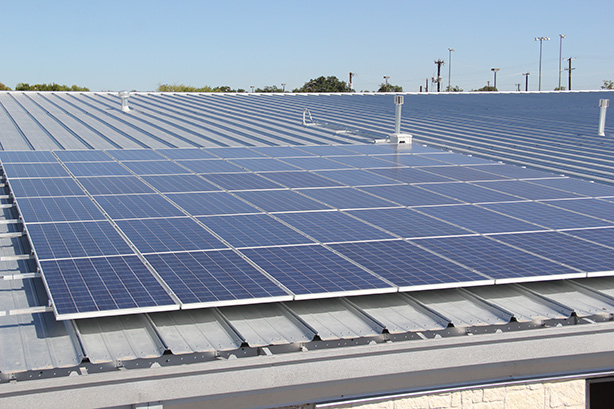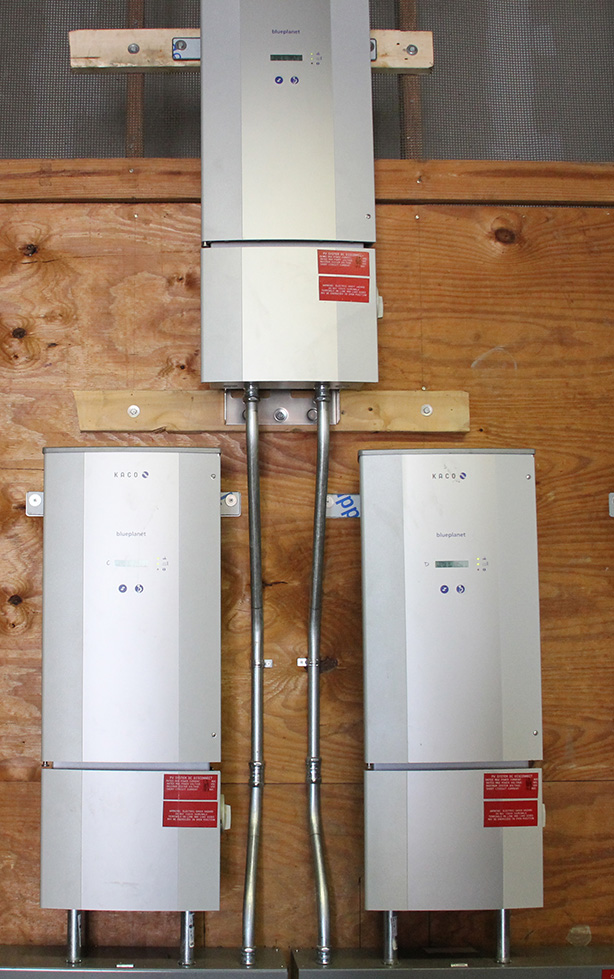
By Rebecca Salinas
Over 100 newly placed solar panels utilized by Southwest Independent School District may open opportunities for students interested in science, technology, engineering and math (STEM) fields, hopes Eduardo F. Garcia, architect and facilities director at the district.
The 3-by-5 foot panels, placed on the rooftop of Southwest ISD’s facility and maintenance building, generate 33 KW, CPS’ measurement for usage per hour. Collaborative partners say they not only save the district money, but expose students to clean energy resources and offer a unique teaching technique used in just a few San Antonio schools.
“What we purchased the systems for was, really, to try to get the students engaged in renewable energy, and solar is at the forefront,” he said.
The district’s facility building houses 108 panels, built by Mission Solar Energy, the only solar panel manufacturer in Texas. CPS Energy contracted Mission Solar to manufacture over 50 panels an hour for solar farms across the city to fulfill its New Energy Economy Initiative.

This is not the only area school district to incorporate solar panels on school property. Across the city on the Northside, Alamo Heights Independent School District, uses solar panels throughout campuses to generate electricity. This program, called Solartricity in partnership with CPS, creates renewable energy and saves money.
Back on the city’s South Side, Garcia said in the future students will take field trips to Mission Solar to see the process of collecting solar energy from beginning to end. Also, students will use a web-based program and monitor energy collection, the mechanics of the panels, and to conduct experiments.
Although the panels were installed under a month ago, the district expects to save about $300 a month on its energy bill.
The power the panels generate return to CPS’ energy grid. Garcia said the discount is applied after meter readers subtract the amount of energy produced from the amount of energy used by the district.
He added that the district took advantage of the opportunity presented by CPS because of the rebates and incentives, but mainly to give access to students.
“For us, it was more of a selling point to try to get teachers and students involved in solar in the classroom,” he said.
“Kids are inquisitive, they are curious. They want to know, ‘Well what does this thing look like, how does it work?’ That’s what this thing is all about. It’s trying to get them to understand the basics of solar energy, and hopefully that’ll trigger interest in science or engineering or something along those lines. We’re just giving our students more options for their futures.”
Southwest ISD is one of few school districts in San Antonio to use solar panels for educational purposes, but the panels are the only ones produced by Mission Solar.
Laura Waldrum, public information officer for Mission Solar, said the company and CPS have no plans to add solar panels to other schools, yet, but they “are always looking for ways to give back to the community.”
Located at Brooks City Base, Mission Solar produces N-type solar cells and solar modules, the only company to do so in the United States. N-type solar panels differ than the traditional P-type products, in that they are technologically advanced, producing more electricity more efficiently.

The company produces 72-cell modules, capable of generating up to 320 watts of power each.
Opening on Sept. 22, the 240,000 square-foot facility employs 240 people, but will expand to 400 employees next year. Also, production will increase to 100 panels per hour with the growth.
“We do have plans to expand over the next year to meet the demand of our contract with CPS Energy,” Waldrum said about the only solar cell and solar module manufacturing facility in Texas. “That’s kind of the level of production we would need to have in order to meet our objectives with them.”
Though the company has only one client, and the panels at Southwest are considered a “start up,” both Waldrum and Garcia say the educational opportunities far outweigh the economic benefits.
“We’re on to something, there definitely is a lot of interest,” Garcia said. “I think it’s just going to help our students immensely. Who knows, maybe we’ll have a couple of engineers graduating here pretty soon.”






